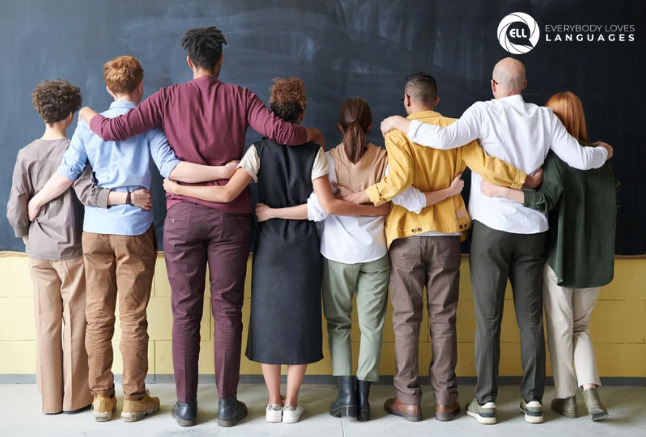By: Luzkarime Calle-Díaz
The post-pandemic world we live in and the advent of new technologies (e.g., artificial intelligence) have brought about greater opportunities for connecting globally and also new, unforeseen challenges. Societies are increasingly more aware of cultural variety, and individuals are invited to embrace diversity at a myriad of levels. Education is at the heart of this endeavor.
Back in 1996, Jacques Delors already affirmed that the role of education should be to help to build “a more solidary world… a new humanism, with an essential ethical component and ample space for knowledge and respect of cultures and values of different civilizations (p. 53).” Ever since, different multinational initiatives have emerged to respond to the need to achieve the goals of the 21st-century education. One of them is Global Citizenship Education (GCE).
GCE emerged as an umbrella term to embrace prior developments, such as peace education, civics and moral education, and sustainable development education (see Evans et. al., 2009; Oxfam, 2006). It started out as an initiative of individual countries (see for instance, the cases of Colombia, Canada, England, The Philippines, Brazil, and Costa Rica, Organización de Estados Iberoamericanos para la Educación, la Ciencia y la Cultura, 2014) and has now become a multinational organization’s agenda that seeks to foster the knowledge, skills, and attitudes necessary to educate learners who are “able to engage and assume active roles both locally and globally to face and resolve global challenges and ultimately to become proactive contributors to a more just, peaceful, tolerant, inclusive, secure and sustainable world (UNESCO, 2013, p. 3).”
Due to their cross-cultural nature, foreign language classrooms are ideal settings to foster the development of global citizenship. Language is at the core of intercultural communication. We build relationships through language. Teaching English with a GCE focus may also allow students to become more critical about their role in this world.
It is in the encounters with other cultures and languages that students can find a place where ‘the self’, ‘the other’, and ‘the world’ interact through a critical view, expanding their cross-cultural and social boundaries, and making room for teachers and students to participate more actively in a society that is increasingly democratic and political.
In their guide for teaching English and global citizenship, Oxfam (2015) states that
A Global Citizenship approach [to English teaching] provides the meaningful wider contexts necessary for language and literature to be fully understood. It enables learners to appreciate a range of perspectives, exploring how texts from different social, historical, and cultural contexts influence values, assumptions, and a sense of identity (p. 1).
The following are some simple strategies teachers can use to infuse GCE in their language lessons[1]:
- Use the target language as the vehicle to learn about current affairs as well as local, national, and global issues.
- Incorporate topics and activities that foster empathy, solidarity, and respect for differences and diversity.
- Use global literature to expose students to different social and cultural realities.
- Provide students with opportunities to develop critical media literacy skills (e.g., distinguishing between facts and opinions, understanding the author’s purpose, analyzing power dynamics behind the news, and identifying fake news, etc.).
- Allow students’ diverse voices and perspectives to be catered for in the classroom.
- Open spaces to challenge and question diverse forms of power and domination.
- Promote students’ equal participation and reflections around humanizing topics through storytelling, journal writing, autobiography, etc.
- Encourage students’ action toward environmental care through in-class and out-of-class problem-solving projects.
- Promote reflection around the world’s countries and population interconnectedness and interdependency.
- Foster critical discussions about the way our actions affect other people and the environment, as well as ideas to diminish this impact.
- Have students analyze ways in which language is used to either foster peace and sustainability or perpetuate discrimination and violence against certain groups of people.
Fostering GCE from an early age can be highly beneficial in our search for more equitable and just societies. Language learning materials developed for young learners, and teenagers should intentionally include objectives that combine language goals with goals (pedagogies and materials) associated with GCE and sustainable development if our aim is to contribute to this higher social goal.
References
Delors, J. (Chair). (1996). Learning: The treasure within [Report to UNESCO of the International Commission on Education for the Twenty-first Century]. UNESCO.
Evans, M., Ingram, L. A., Macdonald, A., & Weber, N. (2009). Mapping the “global dimension” of citizenship education in Canada: The complex interplay of theory, practice, and context. Citizenship, Teaching and Learning, 5(2), 17-34.
Oxfam. (2006). Education for global citizenship: A guide for schools. Retrieved from http://www.oxfam.org.uk/education/global-citizenship/global-citizenship-guides.
Organización de Estados Iberoamericanos para la Educación, la Ciencia y la Cultura, OEI. (2014). Miradas sobre la educación en Iberoamérica: avances en las metas educativas 2021 [A glance at education in Ibero-America: Advances in educational goals 2021]. OEI. Retrieved from http://oei.es/xxivcie/Miradas2014Web.pdf.
UNESCO. (2013). Global citizenship education: An emerging perspective. UNESCO.
Oxfam. (2015). Education for Global Citizenship: A guide for schools. Retrieved from http://www.oxfam.org.uk/~/media/Files/Education/Global%20Citizenship/Global_Citizenship_Schools_web.ashx?la=en.
UNESCO. (2015). Global citizenship education: Topics and learning objectives. UNESCO.
[1] UNESCO (2015) provided clear and concrete guidelines for GCE through a set of topics and learning objectives that teachers can use, based on students’ age and school level (https://unesdoc.unesco.org/ark:/48223/pf0000232993). These can prove very useful for teachers when planning to use GCE in their language learning lessons. Find more information at https://en.unesco.org/themes/gced




Recent Comments